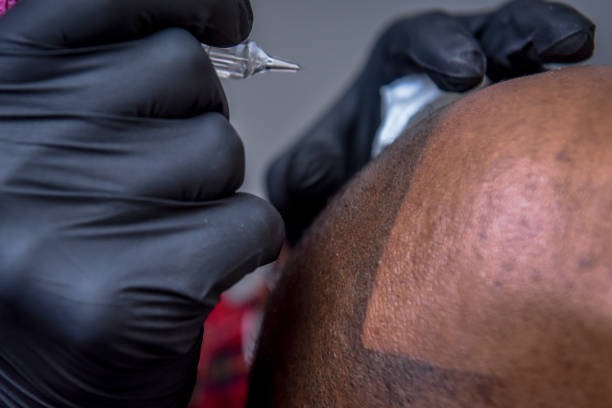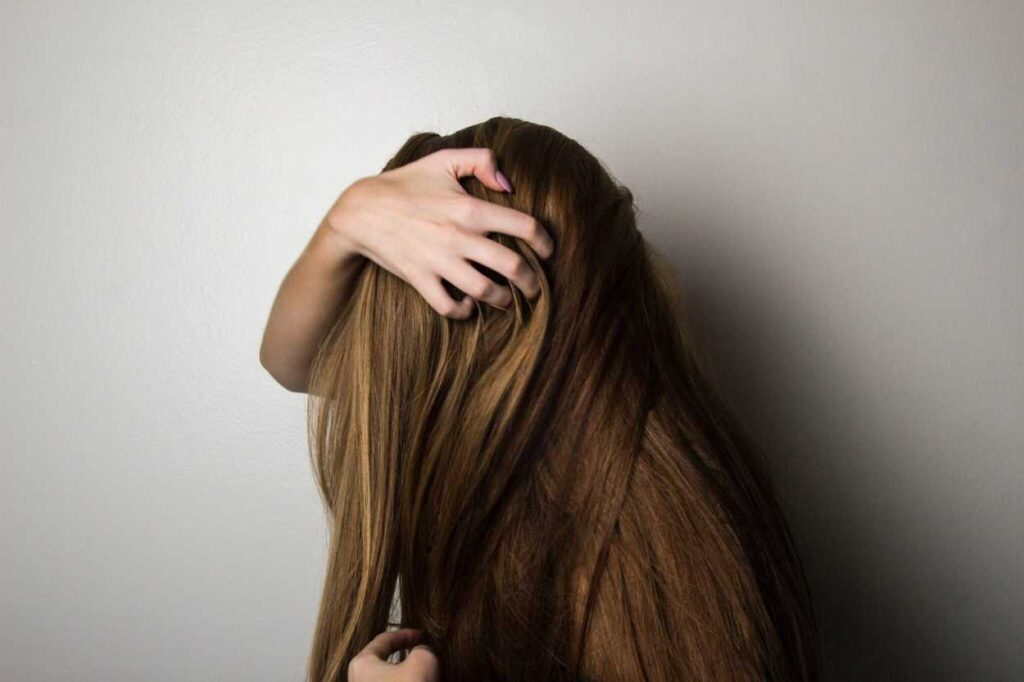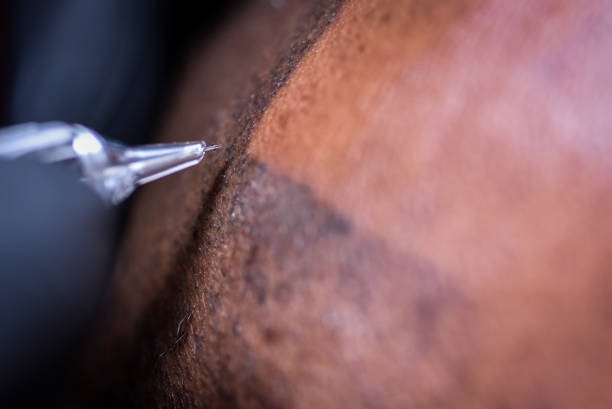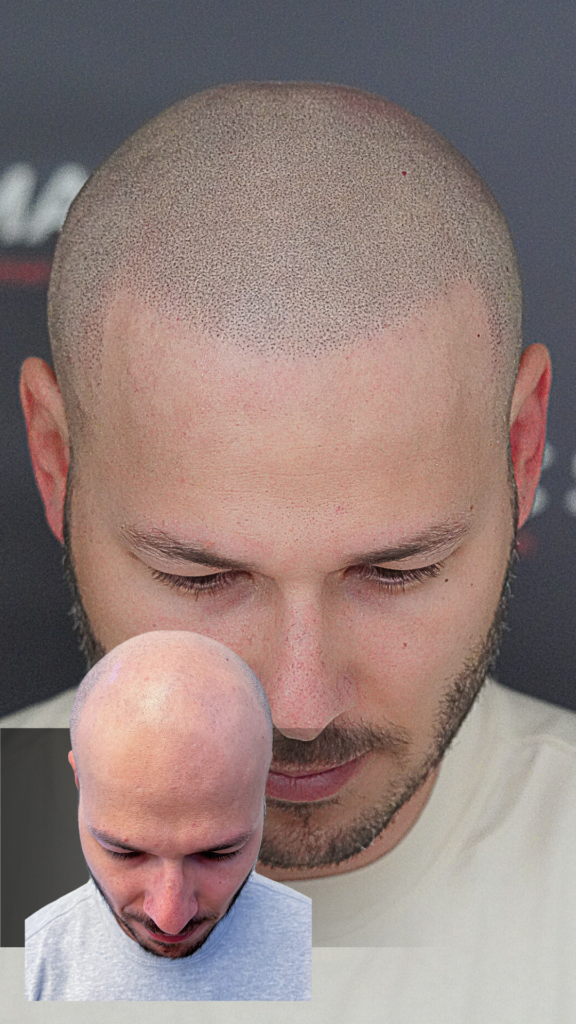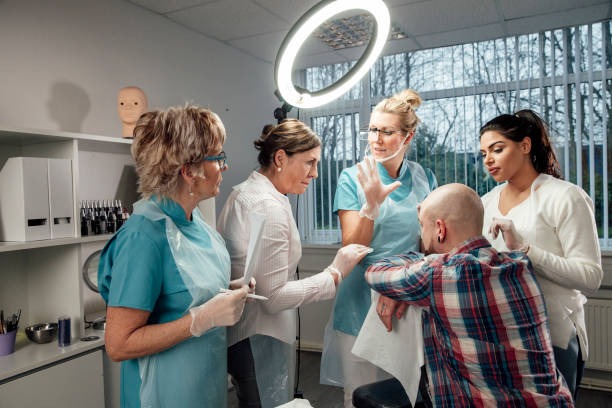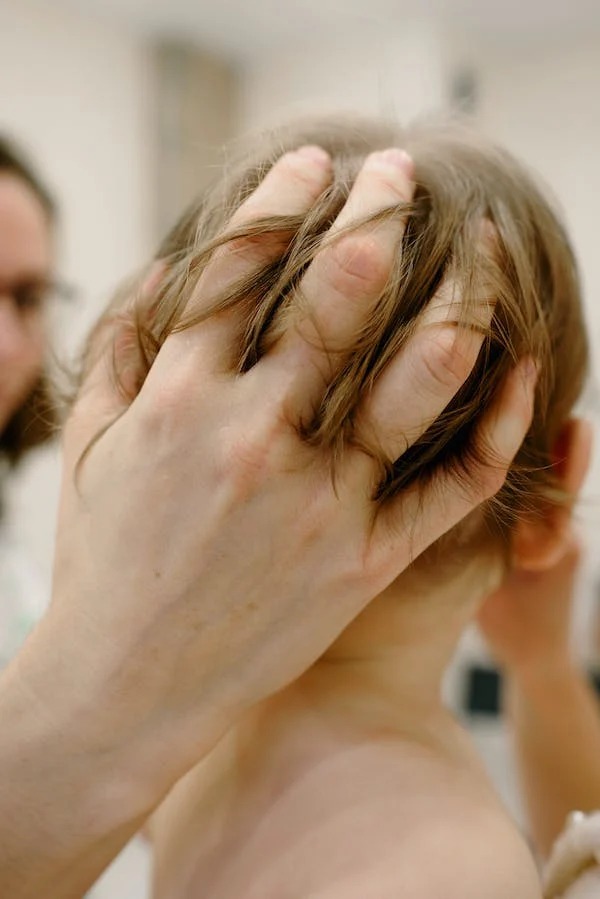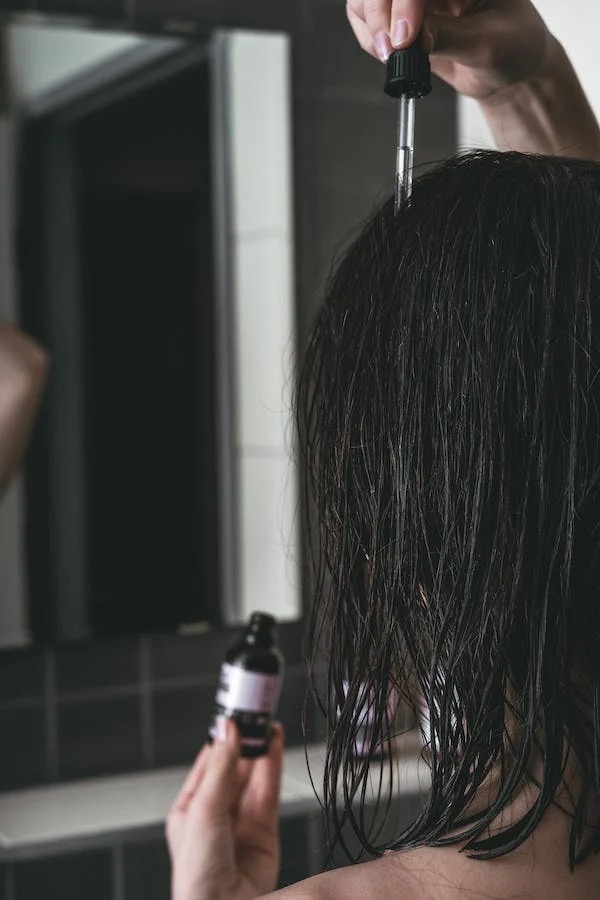Hair loss (Thinning hair or Alopecia) is a common problem caused by various factors, including genetics, aging, and medical conditions. However, nutritional deficiency hair loss is often overlooked.
This article will discuss everything you need to know about the link between nutritional deficiency and hair loss, including the signs and symptoms, common causes, and how to prevent and treat it.
Key Takeaway
Hair loss can be caused by nutritional deficiency. A balanced diet and proper supplements can help prevent and treat hair loss due to nutritional deficiency. It is also important to address underlying medical conditions and discuss medications with a doctor to prevent hair loss.
Generally, a well-balanced diet that includes a variety of vitamins and minerals is important for maintaining healthy hair. If you are concerned about vitamin deficiencies and hair loss, talk to your doctor for personalized advice and treatment recommendations.
Did You Know?
According to the American Academy of Dermatology, hair loss is a common problem that affects 50 million men and 30 million women in the United States.
Male pattern baldness(MPB), also known as androgenetic Alopecia, is the most common cause of hair loss in men and is responsible for 95% of hair loss in men.
Women are more likely to experience diffuse hair loss, which is hair loss that is diffuse or spread out across the scalp. The American Hair Loss Association estimates that 40% of women experience some degree of hair loss by the time they reach the age of 40.
Signs and Symptoms of Nutritional Deficiency Hair Loss
The first step in preventing and treating hair loss due to nutritional deficiency is to be aware of the signs and symptoms. Some common signs and symptoms of nutritional deficiency hair loss include:
● Thinning hair or hair shedding:
This is the most common and noticeable symptom of hair loss due to nutritional deficiency. If you notice more hair than usual in your brush or shower drain, or if your ponytail is thinner than it used to be, this could be a sign of hair loss due to nutritional deficiency.
● Dry, brittle, or dull hair:
Healthy hair should be shiny and bouncy, but hair lacking essential nutrients may appear dull and lifeless. In addition, nutritional deficiency can cause the hair to become dry and brittle, leading to breakage and further hair loss.
● Scalp irritation or dandruff:
A healthy scalp is essential for healthy hair growth, and a lack of essential nutrients can lead to a dry, flaky scalp that may be itchy and irritated. If you notice dandruff or other scalp irritation, this could be a sign of nutritional deficiency hair loss.
● Brittle nails:
Just like hair, nails also require essential nutrients to remain healthy and strong. If you notice that your nails are breaking or splitting more than usual, this could signify nutritional deficiency.

Common Causes of Nutritional Deficiency Hair Loss
There are many different reasons a person may develop a nutritional deficiency that leads to hair loss. Some common causes of nutritional deficiency hair loss include:
● Poor diet:
A diet lacking essential nutrients, such as protein, iron, and vitamins B and C, can lead to hair loss. This is particularly common in people who follow restrictive diets, such as vegan or vegetarian diets, or in people who have eating disorders.
● Lack of absorption:
In some cases, a person may be unable to absorb essential nutrients from their food due to medical conditions such as celiac disease or inflammatory bowel disease. This can lead to hair loss due to nutritional deficiency.
● Chronic illness:
Certain medical conditions, such as alopecia areata, HIV/AIDS, cancer, and kidney disease, can lead to hair loss due to nutritional deficiency. These conditions can affect the body’s ability to absorb and utilize essential nutrients.
● Medications:
Some medications, such as antacids and blood pressure medications, can interfere with the absorption of essential nutrients and lead to hair loss. It is important to discuss any potential side effects with your doctor before starting a new medication.
The Role of Vitamins and Minerals in Hair Loss
Hair follicles, the mini factories producing hair strands, are incredibly metabolically active. They require constant nutrients to function optimally and produce healthy, strong hair. Deficiencies in essential vitamins and minerals can disrupt these processes, leading to hair loss:
- Vitamins: Biotin, vitamin A, vitamin C, vitamin D, vitamin E, and B vitamins like B12 and niacin are crucial for hair growth and health. They participate in DNA synthesis, cell proliferation, sebum production, and antioxidant protection, all of which are vital for healthy hair follicles.
- Minerals: Iron, zinc, selenium, and copper are essential minerals for hair health. They contribute to enzyme function, oxygen transport, collagen synthesis, and hormone regulation, all of which play a role in hair growth and maintenance.
When these nutrients are deficient, various hair problems can occur, including:
- Telogen effluvium: This is a temporary form of hair loss caused by a disruption in the hair growth cycle. Deficiencies in iron, zinc, and B vitamins are commonly linked to telogen effluvium.
- Alopecia areata: This is an autoimmune condition causing patchy hair loss. Studies suggest deficiencies in vitamin D might contribute to its development.
- Diffuse hair thinning: This gradual thinning of hair all over the scalp can be caused by deficiencies in various vitamins and minerals.
What are the various vitamin deficiencies that may cause or contribute to hair loss?
Several vitamin deficiencies may cause or contribute to hair loss.
A lack of vitamins A, B12, C, and D can cause thinning hair. A deficiency in vitamin C can cause hair loss because vitamin C is needed for the production of collagen, which is important for hair growth.
A shortage of vitamin B can cause hair loss because it is essential for producing red blood cells, which are responsible for carrying oxygen to the hair follicles.
Vitamin D deficiency can lead to hair loss because it is involved in the production of new hair follicles.
Biotin deficiency can also cause hair loss because biotin is essential for the metabolism of proteins, which are the building blocks of hair.
Other vitamin deficiencies that may cause or contribute to hair loss include iron, zinc, and essential fatty acids.
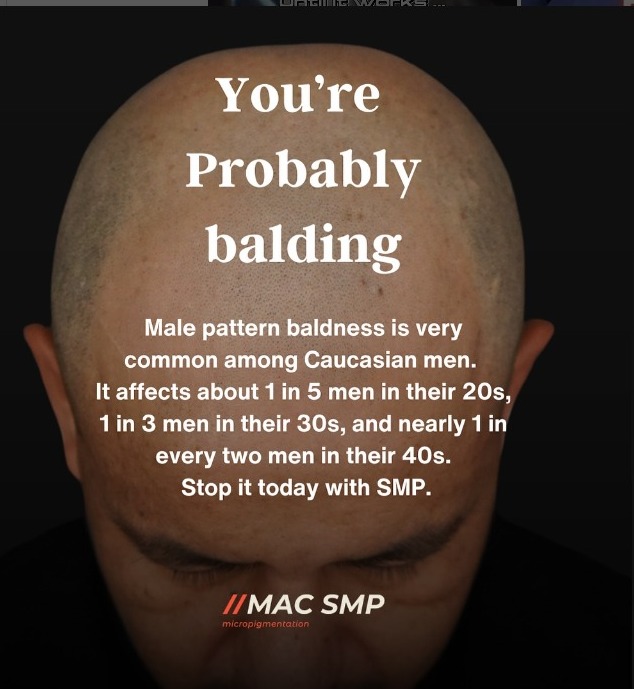
10 Vitamin Deficiencies That Are Linked To Nutritional Deficiency Hair Loss.
1. Iron Deficiency:
Iron is crucial for carrying oxygen to hair follicles. When there’s a deficiency, oxygen delivery to the follicles is impaired, which is especially problematic for women as they already have lower iron reserves than men. This deprivation can lead to hair loss, thinning, and weakened hair structure. In severe cases, it may even result in baldness.
2. Vitamin D Deficiency:
Vitamin D receptors are found in hair follicles, indicating its importance in hair growth regulation. A deficiency can disrupt this process, potentially leading to conditions like alopecia areata, where the immune system attacks hair follicles, causing hair loss. Additionally, inadequate vitamin D levels may hinder the production of new hair strands, exacerbating hair thinning and loss.
3. Biotin Deficiency:
Biotin, also known as vitamin B7 or H, is vital in metabolizing carbohydrates, fats, and proteins into energy required for hair follicles. Without sufficient biotin, the hair growth cycle can be disrupted, resulting in hair loss, decreased hair thickness, and increased brittleness. Maintaining adequate biotin levels is crucial for overall hair health and vitality.
4. Zinc Deficiency:
Zinc is essential for cell division, tissue growth, and repair, processes integral to hair follicle function and hair growth. Inadequate zinc levels can hinder these processes, leading to hair thinning, increased dandruff, and slower hair growth rates. Additionally, zinc deficiency may compromise the immune system, potentially exacerbating scalp conditions contributing to hair loss.
5. Vitamin A Deficiency:
While excessive vitamin A intake can be detrimental to hair health, deficiency can also have adverse effects. Vitamin A is essential for maintaining a healthy scalp and supporting the growth and differentiation of skin cells, including those in hair follicles. Insufficient levels can result in dry, flaky scalp and impaired hair growth, potentially leading to hair loss over time.
6. Niacin Deficiency:
Niacin, or vitamin B3, is crucial in energy metabolism and circulation, nourishing the scalp and hair follicles. A niacin deficiency can impair these processes, leading to decreased blood flow to the scalp, inadequate nutrient delivery to hair follicles, and subsequent hair loss. Additionally, niacin deficiency may manifest as scalp issues such as dryness, itchiness, and inflammation.
7. Vitamin B12 Deficiency:
Vitamin B12 is essential for red blood cell production, transporting oxygen to tissues, including hair follicles. Inadequate B12 levels can result in decreased oxygen delivery to the scalp, weakening hair follicles, hair loss, and changes in hair color and texture. Ensuring sufficient intake of vitamin B12 is crucial for maintaining healthy hair growth and preventing associated deficiencies.
8. Selenium Deficiency:
Selenium acts as an antioxidant, protecting hair follicles from oxidative stress and damage caused by free radicals. A selenium deficiency can compromise this protective function, potentially leading to hair follicle damage, premature hair loss, and scalp issues such as dandruff and itching. Adequate selenium intake is essential for maintaining optimal hair health and growth.
9. Copper Deficiency:
Copper synthesizes collagen, a structural protein crucial for maintaining the strength and integrity of hair strands. Additionally, copper plays a role in melanin production, determining hair color. Copper deficiency can result in weakened hair structure, increased susceptibility to breakage, and changes in hair color. Ensuring sufficient copper intake is essential for supporting overall hair health and vitality.
10. Protein Deficiency:
Protein is the primary building block of hair, comprising most of its structure. Inadequate protein intake can disrupt the hair growth cycle, weakening hair shafts, increasing shedding, and even causing hair loss in severe cases. Ensuring a balanced diet with sufficient protein is essential for supporting healthy hair growth and minimizing the risk of protein-related deficiencies.
Preventing and Treating Nutritional Deficiency Hair Loss
The good news is that, in most cases, hair loss due to nutritional deficiency is reversible. The key is to identify the underlying cause and address it to restore healthy hair growth. Here are some tips for preventing and treating nutritional deficiency hair loss:
● Eat a balanced diet:
A healthy, balanced diet is essential for maintaining healthy hair. Be sure to include a variety of protein-rich foods, such as lean meats, fish, and beans, as well as fruits and vegetables that are rich in vitamins and minerals.
● Take supplements:
If you cannot get all the essential nutrients from your diet, consider taking supplements. Ask your doctor or a registered dietitian for recommendations on which supplements may be beneficial for preventing or treating hair loss due to nutritional deficiency.
● Address underlying medical conditions:
If you have a medical condition affecting your ability to absorb essential nutrients, it is important to work with your doctor to manage and treat the condition. This may help to restore healthy hair growth.
● Talk to your doctor about medications:
Talk to your doctor about possible alternatives if you are taking medications contributing to hair loss. In some cases, switching to a different medication may help to prevent hair loss.
Conclusion
Hair loss is a common problem that can have many different causes, including nutritional deficiency.
By being aware of the signs and symptoms, common causes, and ways to prevent and treat hair loss due to nutritional deficiency, you can take steps to maintain healthy, strong hair.
If you are concerned about hair loss, talk to your doctor for personalized advice and treatment recommendations.
Need help with nutritional deficiency hair loss or any kind of hair loss treatments? Click here to book an appointment or to talk to a professional today.
